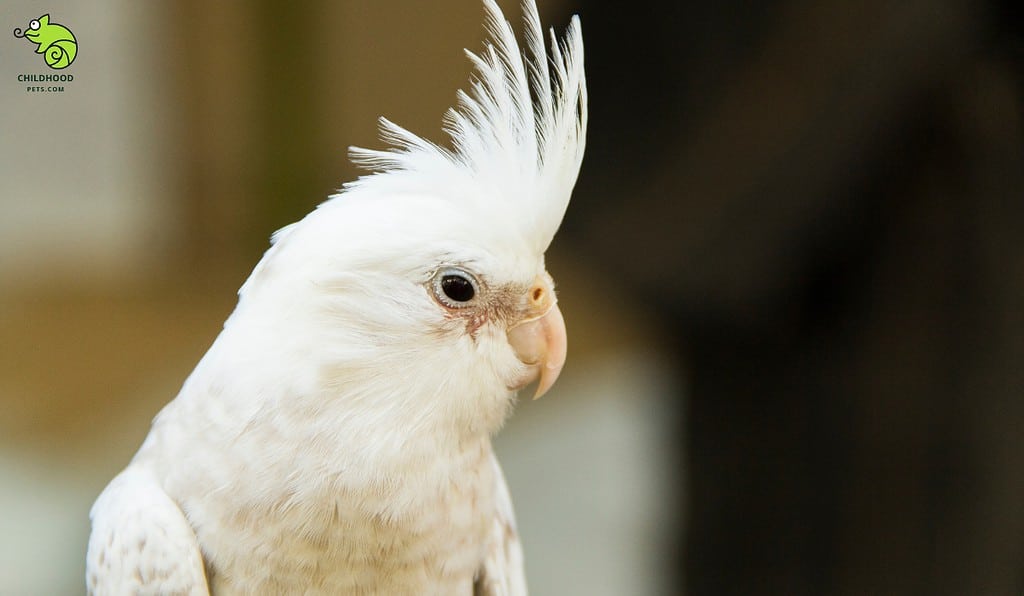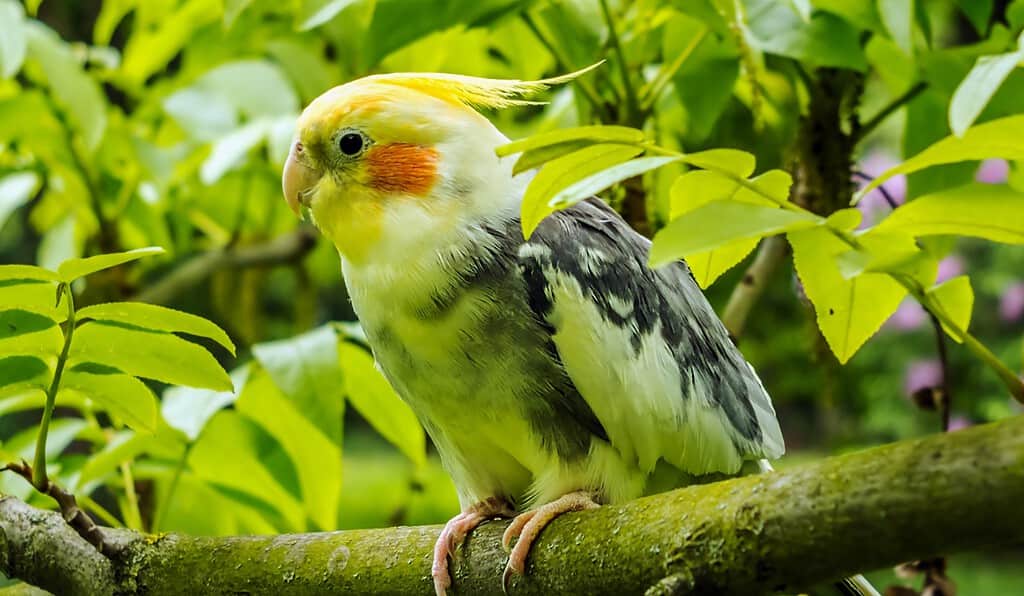
The world of birds is filled with vibrant colors, melodious songs, and intricate behaviors. Among these avian wonders, cockatiels stand out not just for their charming crests and cheeky personalities, but also for their unique auditory abilities. Have you ever wondered how these feathered creatures perceive the world of sound, especially when they lack visible ears like ours?
As a general rule, cockatiels have a remarkable sense of hearing that allows them to communicate, navigate their environment, and detect potential threats. Their hidden ears, concealed beneath a layer of feathers, play a pivotal role in their daily interactions and survival strategies.
Ready to dive deeper? Join me on this auditory journey as we explore the fascinating world of cockatiels‘ hearing abilities. Let’s tune in!
Do Cockatiels Have Ears?
Yes, cockatiels do have ears. However, they don’t have external ear flaps or pinnae. Instead, their ears are concealed beneath a layer of feathers, making them almost invisible to the naked eye. Located slightly behind and below the eye.
The absence of protruding ears aids in aerodynamics during flight, while the internal structure allows them to perceive a range of sounds effectively. The hidden nature of their ears provides them with a sleek appearance, and the surrounding feathers offer protection to the ear openings. Their hearing range is designed to pick up frequencies that are vital for their communication and survival. They detect sounds between 250-8,000hz, but can also sense frequencies outside this range. However, they’re sensitive to loud noises, so a quieter home environment is ideal for their well-being.
The Anatomy of Cockatiel Ears
Cockatiels, don’t have external ears that are easily visible. The absence of protruding ears reduces drag, allowing birds to fly more efficiently. The ear of a cockatiel is located slightly behind and below the eye. It’s covered by a patch of specialized feathers known as auriculars. These feathers protect the ear from debris and help funnel sound into the ear canal.
Cockatiel Ear Features:
| Feature | Cockatiel Ear |
| Appearance | Hidden beneath feathers |
| Ear Canal | Short and direct |
| Eardrum | Thin and sensitive |
| Inner Ear | Contains the cochlea for hearing |
How Do Cockatiels Hear?
Cockatiels, like other birds, have a remarkable sense of hearing. Their hearing range is adapted to perceive the frequencies that are most relevant to their survival and communication.
- Sound Wave Capture: The concealed ear, covered by auricular feathers, captures sound waves from the environment.
- Ear Canal Transmission: The sound waves travel through the short and direct ear canal.
- Eardrum Vibration: The sound waves cause the thin and sensitive eardrum to vibrate.
- Inner Ear Processing: The vibrations are then transmitted to the inner ear, specifically the cochlea. The cochlea contains tiny hair cells that move in response to the vibrations, creating electrical signals.
- Brain Interpretation: These electrical signals are sent to the brain, where they are interpreted as sounds.
I’ve observed that cockatiels, like many birds, rely heavily on their sense of hearing. Whether it’s responding to a call from a fellow bird or detecting the subtle sounds of a potential threat, their ears play a crucial role in their daily lives.
The Importance of Sound for Cockatiels

Sound isn’t just a sensory experience for cockatiels; it’s a lifeline. It plays a pivotal role in their daily interactions, survival strategies, and overall well-being. Let’s delve deeper into the significance of sound for these fascinating birds.
Communication Among Cockatiels
Cockatiels are social birds, and they’ve developed a range of calls and songs to communicate with each other. Whether it’s a mating call, a warning signal, or a simple chirp to express contentment, each sound has a specific meaning.
Types of Cockatiel Calls and Their Meanings
| Call Type | Meaning | Possible Interpretation |
| Whistle | Attraction or seeking attention | “Look at me!” or “Where are you?” |
| Chirp | Contentment or relaxation | “All is well.” |
| Loud, Repeated Calls | Distress or seeking a mate | “I need help!” or “I’m available!” |
| Hissing | Threat or discomfort | “Stay away!” |
| Purring | Contentment or relaxation, similar to a cat’s purr | “I’m comfortable here.” |
Environmental Awareness
Cockatiels, being prey animals, have evolved to be highly attuned to their surroundings. Their acute sense of hearing helps them detect potential threats, navigate their environment, and find food.
Key Sounds in Nature Cockatiels Respond To:
- Rustling Leaves: Indicates the movement of predators or the presence of food.
- Distant Calls: Helps them locate their flock or warn of impending danger.
- Water Flow: Signifies a potential drinking or bathing spot.
- Wind Patterns: Assists in navigation during flight.
- Insect Movement: A hint for a potential meal.
How to Ensure a Sound-Friendly Environment for Your Cockatiel
Understanding the intricacies of a cockatiel’s hearing abilities is just the beginning. Now, let’s explore how you can create a sound-friendly environment that caters to your feathered friend’s unique auditory needs.
Safe Noise Levels
Cockatiels, like all birds, have sensitive hearing. While they can tolerate a range of sounds, certain noises can be distressing or even harmful to them.
Common Household Sounds and Their Impact on Cockatiels
| Sound Source | Decibel Level | Safe for Cockatiels? |
| Whisper | 20-30 dB | Safe |
| Normal conversation | 60-70 dB | Safe |
| Vacuum cleaner | 70-85 dB | Potentially stressful |
| Hairdryer | 85-90 dB | Potentially stressful |
| Loud music or TV | 90-100 dB | Harmful |
| Blender or food processor | 85-95 dB | Potentially stressful |
| Doorbell or phone ring | 80-90 dB | Safe, but can be startling |
Tips for a Calm Environment
Creating a serene environment for your cockatiel not only ensures their comfort but also promotes their overall well-being. Here are some steps you can take:
- Monitor Noise Levels: Be mindful of the volume when watching TV or listening to music. If it’s too loud for you, it’s probably too loud for your bird.
- Choose Quiet Appliances: Opt for quieter household appliances, especially if they’ll be used near your cockatiel’s cage.
- Provide a Safe Space: Ensure your cockatiel has a quiet spot in your home where they can retreat if the noise becomes overwhelming.
- Limit Sudden Noises: Try to minimize unexpected loud noises, such as alarms or doorbells, which can startle your bird.
- Soundproofing: Consider adding soft furnishings like curtains or rugs to absorb sound and reduce echoes.
Conclusion
Cockatiels, with their vibrant personalities and keen senses, deserve an environment that caters to their unique needs. By understanding their hearing abilities and ensuring a sound-friendly habitat, you’re not just providing them with comfort but also expressing your love and care. So, the next time your cockatiel chirps or sings, know that it’s their way of saying “thank you.”
If you found this article helpful, please share it with fellow bird enthusiasts. Your feathered friend will surely appreciate it!
Frequently Asked Questions
How do birds hear without external ears?
Birds have internal ears hidden beneath feathers, which capture and process sound effectively.
Can cockatiels recognize their owner’s voice?
Absolutely! Cockatiels can recognize and respond to familiar voices.
Are there sounds that cockatiels particularly enjoy or dislike?
Cockatiels often enjoy soft music and familiar voices but might be distressed by sudden loud noises.
How can I tell if my cockatiel is experiencing hearing problems?
Changes in behavior, lack of response to familiar sounds, or signs of distress can indicate hearing issues.
